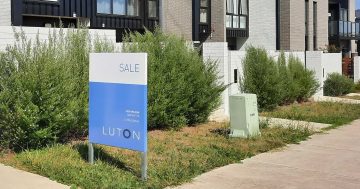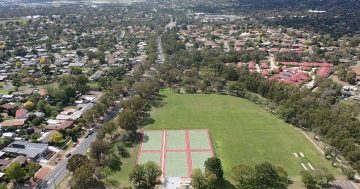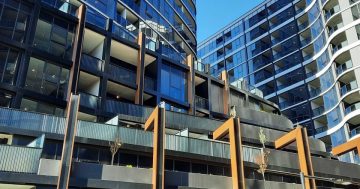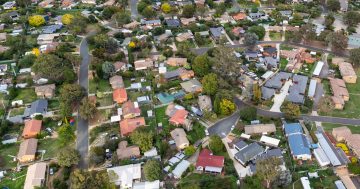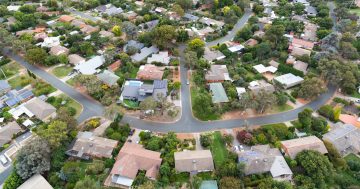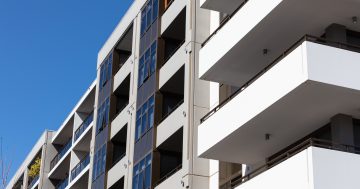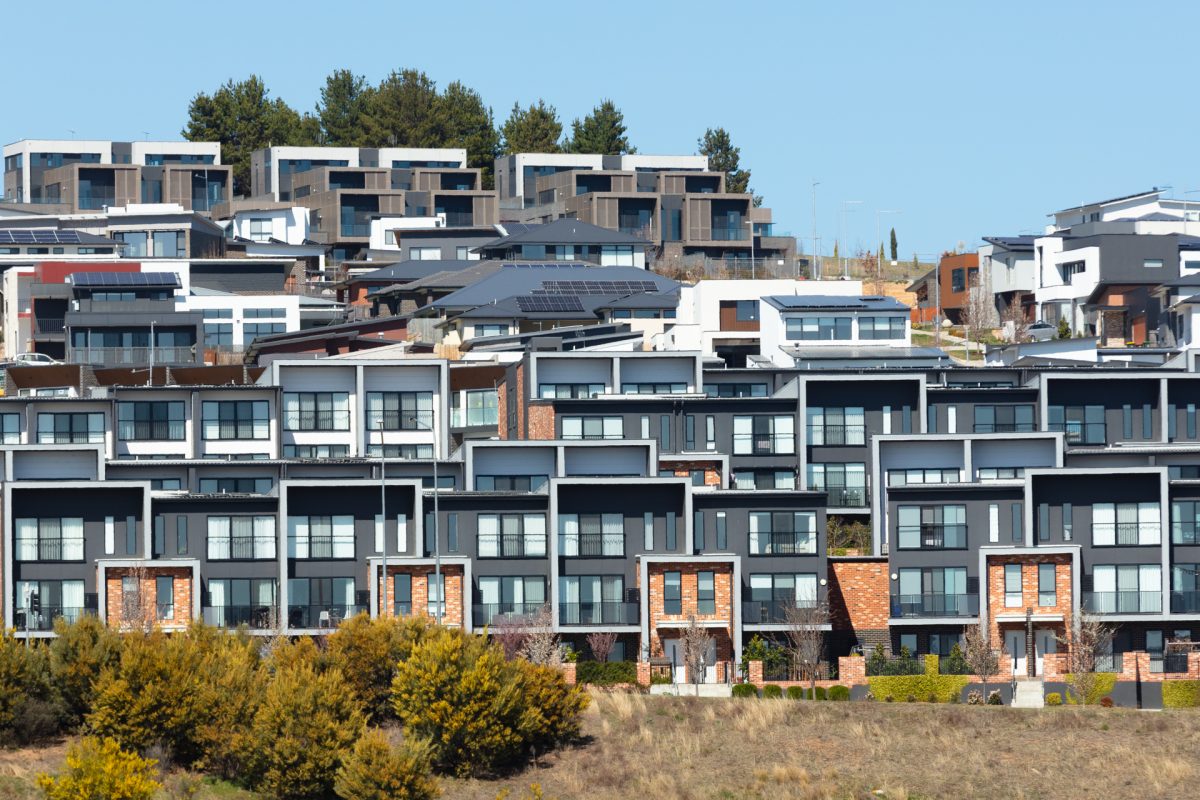
The surge in apartment and townhouse construction has kept prices and rents under control. Photo: Michelle Kroll.
It’s ever-present. You can’t go anywhere, hear, watch or read anything without it popping up like a recurring nightmare: the housing crisis.
Whether you have a mortgage, want one or are resigned to renting across the nation, ‘gimme shelter’ is its theme song.
Addicted to generous tax settings and fuelled by migration and planning roadblock constraining supply, Australia’s housing market just seem to keep rising with no end in sight despite governments’ intentions and plans to build their way out of this conundrum.
Yet a funny thing has happened here in the national capital, where the boom echoed as loud as anywhere for a while.
Home prices have actually fallen, although they’re still way higher than in pre-pandemic days. According to CoreLogic, they are 6.1 per cent below the high in May 2022.
While the markets in Adelaide, Brisbane and Perth have taken off despite the spike in interest rates, Canberra stabilised, and the apartment and townhouse sector, in particular, actually fell.
Rents also stabilised and fell, while the vacancy rate improved, to be now about 2 per cent.
It has got to the point where agencies are offering four-week rental rebates to tenants to get them into new digs, instead of managing queues of house hunters and picking and choosing who they want.
The latest data from SQM Research to 12 September showed that Canberra’s monthly combined rent fall of 1.2 per cent was the biggest among the capital cities.
Canberra has been an island of calm in a cruel sea of surging prices and rents, eating into people’s incomes and locking more people out of the great Australian dream.
It’s a far cry from just a few years ago when Canberra had the highest rents in the country and was second only to untouchable Sydney for prices.
The main reason is that Canberra has been building a hell of a lot of apartments and townhouses and doing it better than elsewhere to correct the mismatch of supply and demand that plagues the rest of the nation.
It’s also giving people a cheaper alternative to chasing what, for many, has become the standalone mirage.
Higher mortgage rates have also dampened demand, with potential buyers having to adjust their aspirations or drop out of the market altogether, and those who want to sell are accepting lower offers.
Despite Canberra’s high prices, the ACT’s high relative incomes and strong economy, underpinned by the federal government, have also kept affordability at “reasonable” levels and below national and combined capital figures.
CoreLogic/ANZ’s latest housing affordability report released this month shows things have got tougher for homebuyers but nowhere near what is happening in other parts of the country.
At June 2024, the portion of income needed to service a new mortgage was 40.2 per cent, up from 38.2 per cent in June 2023. But the national figure was much worse at 48.9 per cent, and the combined capital figure was 48.3 per cent. It was the second-best result among the capitals.
The difference in the amount between houses and units/townhouses in the ACT is stark – 45.6 per cent and 27.1 per cent. Nationally it’s 53.4 per cent and 41.2 per cent.
So Canberra is much better off. But these statistics are still not great, especially if you look at the numbers from just a few years ago when in March 2020 Canberrans only needed 24.1 per cent of their income, according to the April 2024 affordability report.
And it is taking longer to save for a deposit – 9.6 years for a house and 5.7 for a unit/townhouse, the latter marginally less since last year. In 2020 it was 7.9 and 5.0.
The portion of income to pay the rent has hovered around a quarter from 2020 to 2024 but for houses it’s 27.2 per cent and units 22.2 per cent.
There is no denying that mortgages and rents are still taking too much of people’s incomes. The median price is about $845,000 and rent about $650 for all dwellings. For those who do not have a well-paid job or are on fixed incomes, it continues to be a struggle just to keep a roof over their heads.
That is where the real crisis is.
However, the overall increase in housing supply has made a difference and exerted some downward pressure on the market.
The ACT Government believes it is responding to need by updating its public housing stock, releasing more land and encouraging and partnering in community-based build-to-rent projects, as well as working with the Federal Government’s housing plan.
Both Labor and the Canberra Liberals want to make more land available for housing.
But the horse has truly bolted when it comes to property prices – and people will argue about why this has been allowed to happen – but in Canberra, at least, there has been some respite.












